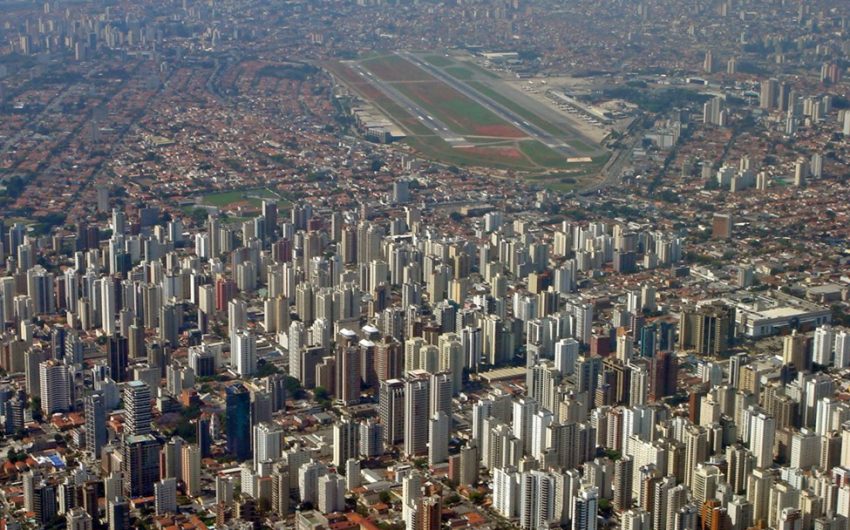Located in São Paulo, the most populous metropolis in South America, Congonhas (CGH) Airport’s central location provides a convenient gateway for travelers to and from the city, Brazil’s main business hub. But this has not always been the case. In the 1930’s, the area where the Airport was being built was surrounded only by farmland. When it first opened, in 1936, passengers who could afford to fly often complained about how remote and inaccessible the airfield was. Since then, the city has swiftly grown around Congonhas and beyond, such that the Airport now lies dramatically embedded among buildings and busy highways. As the city grew, so too did the demand for the airport’s use. In 2019, CGH served just under 22 million passengers and averaged over 600 ATMs each day.
A noisy neighbor
As expected, noise has become a pressing issue, but the population who decided to make their homes under the existing flight paths had grown somewhat accustomed to it, despite their concerns with the growing nuisance as traffic increased. In a sense, the system was in a sort of equilibrium. However, in 2022, complaints to ANAC (Brazil’s Aviation Regulator) about noise around Congonhas grew 30-fold, from only 37 in all of last year to 1,137 in the first semester of this year alone. What happened?
On May 20th, 2021, DECEA (Brazil’s ANSP) implemented the new Terminal Maneuvering Area for São Paulo, TMA-SP NEO, which changed a few relevant procedures. Importantly, it introduced more efficient arrival and departure procedures, through the concept of Performance Based Navigation, cutting down fuel burn and CO2 emissions and, DECEA calculates, reducing the overall noise emission by 15%. However, the change effectively spread the flight paths, and consequently the noise, over a larger area, including neighborhoods which historically had not suffered significantly from aircraft noise exposure. The population living in these areas is very concerned, claiming the existing equilibrium was upset and their peace of mind and property value have been disturbed.
A new chapter
Complicating this issue is the fact that the concession of CGH to the private sector, following this week’s auction, is expected to loosen slot restrictions, and result in an increase of over 30% in the number of hourly slots allowed to operate at this Airport, according to the existing feasibility studies. The allocation of slots at CGH has been capped since 2007, following a tragic runway overshoot which claimed the lives of 199 passengers, crew, and bystanders on the ground. An active group made up of representatives of 8 nearby neighborhood associations is fighting against these changes and the concession itself. A request to block the auction was unsuccessful, but the battle is far from over as far as these neighbors are concerned; “Not a single flight more!” is their motto.
From the point of view of the potential bidders, this situation offered uncertainty on the economic feasibility. Some of the expected investors have walked away from the auction, reportedly citing an “uncertain economic and political landscape” as one of the reasons. This left the path clear for the single remaining bidder, Spanish operator AENA, to take the concession for Congonhas, along with the other, smaller Airports of its Block. Now, as experienced operator AENA prepares to take over operations of this high-profile asset in the coming months, it knows it faces many unique challenges ahead; not least of which, how to balance traffic growth and profitability with navigating local politics and, importantly, managing the relationship with its upset neighbors.
Managing the effects of noise
So how can the issue of noise be mitigated by the airport operator and the government regulator? In general, there is no escaping the fact that traffic growth will result in more noise, though noise mitigation can help reduce exposure to noise. On the other hand, it is important to ensure that a clear and effective noise policy is in place. To be able to make the most informed decisions, it’s also essential to calculate, measure, and monitor noise exposure, to ensure that the amount of noise is within acceptable (international) standards. In the end, transparent communication with the affected population is essential, including the measures being taken to reduce the negative effects of noise on the local population.
Main photo: Wikipedia commons

